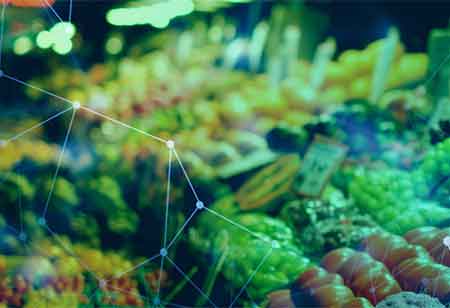Thank you for Subscribing to Food Business Review Weekly Brief
How Wine Producers Use Marketing Strategies to Boost Sales
Producers create a narrative that resonates with consumers seeking authenticity and emotional connections by highlighting the heritage, terroir, and craftsmanship behind each bottle.

By
Food Business Review | Monday, December 09, 2024
Stay ahead of the industry with exclusive feature stories on the top companies, expert insights and the latest news delivered straight to your inbox. Subscribe today.

Producers create a narrative that resonates with consumers seeking authenticity and emotional connections by highlighting the heritage, terroir, and craftsmanship behind each bottle.
Fremont, CA: The wine industry, steeped in tradition yet vibrant with innovation, has embraced various marketing strategies to increase sales and strengthen brand loyalty. Wine producers understand that success hinges on the quality of their products and on how effectively they can position and communicate their brand in an increasingly competitive market. Central to this effort is the use of storytelling. The approach is efficient with premium wines, where the story often justifies higher price points and builds brand prestige.
Social media platforms, known for their visual appeal, enable wineries to showcase the beauty of their vineyards, cellar practices, and pairing ideas. Influencer collaborations amplify these efforts, tapping into established audiences who trust the recommendations of wine bloggers or sommeliers. Email marketing campaigns, often offering exclusive deals or early access to new releases, nurture customer relationships and drive direct-to-consumer (DTC) sales, an increasingly vital channel for wine producers.
Experiential marketing plays a pivotal role in boosting wine sales. Producers often host vineyard tours, wine tastings, and food pairing events to create immersive experiences that deepen customer loyalty. Virtual wine tastings, which gained popularity during the COVID-19 pandemic, continue to thrive, breaking geographical barriers and enabling wineries to engage directly with a global audience. The events drive immediate sales and foster long-term brand advocacy by giving customers a memorable interaction with the product. Strategic pricing and packaging further enhance a winery’s market appeal.
Many producers employ tiered pricing strategies, offering entry-level wines to attract new customers while maintaining premium or limited-edition offerings for connoisseurs. Packaging, often the first point of consumer interaction, is designed to reflect the brand’s essence. Sleek, modern labels attract younger audiences, while classic, ornate designs appeal to traditionalists. Sustainability is a growing trend in wine marketing, with producers adopting eco-friendly packaging and practices to cater to environmentally conscious consumers. Wine producers leverage partnerships and collaborations to broaden their market reach.
Collaborating with restaurants, wine clubs, and retailers ensures visibility in places where consumers are likely to make purchasing decisions. Some producers even co-brand with luxury lifestyle companies or celebrities to tap into new demographics. Participation in international wine competitions also serves as a marketing tactic, as awards and accolades can significantly enhance a wine’s reputation and desirability. Producers analyze consumer preferences, buying habits, and market trends to refine their offerings and campaigns. Wineries can tailor their portfolios and marketing messages to meet demand.
E-commerce platforms and loyalty programs provide valuable insights into customer behavior, helping producers deliver personalized recommendations and foster repeat purchases. Wine producers recognize the importance of cultural and regional considerations in their marketing efforts. For instance, emphasizing food pairing options for different cuisines can resonate with specific cultural groups. Producers targeting younger audiences may focus on wines suited for casual gatherings, while those appealing to seasoned wine lovers might highlight intricate tasting notes and aging potential.






